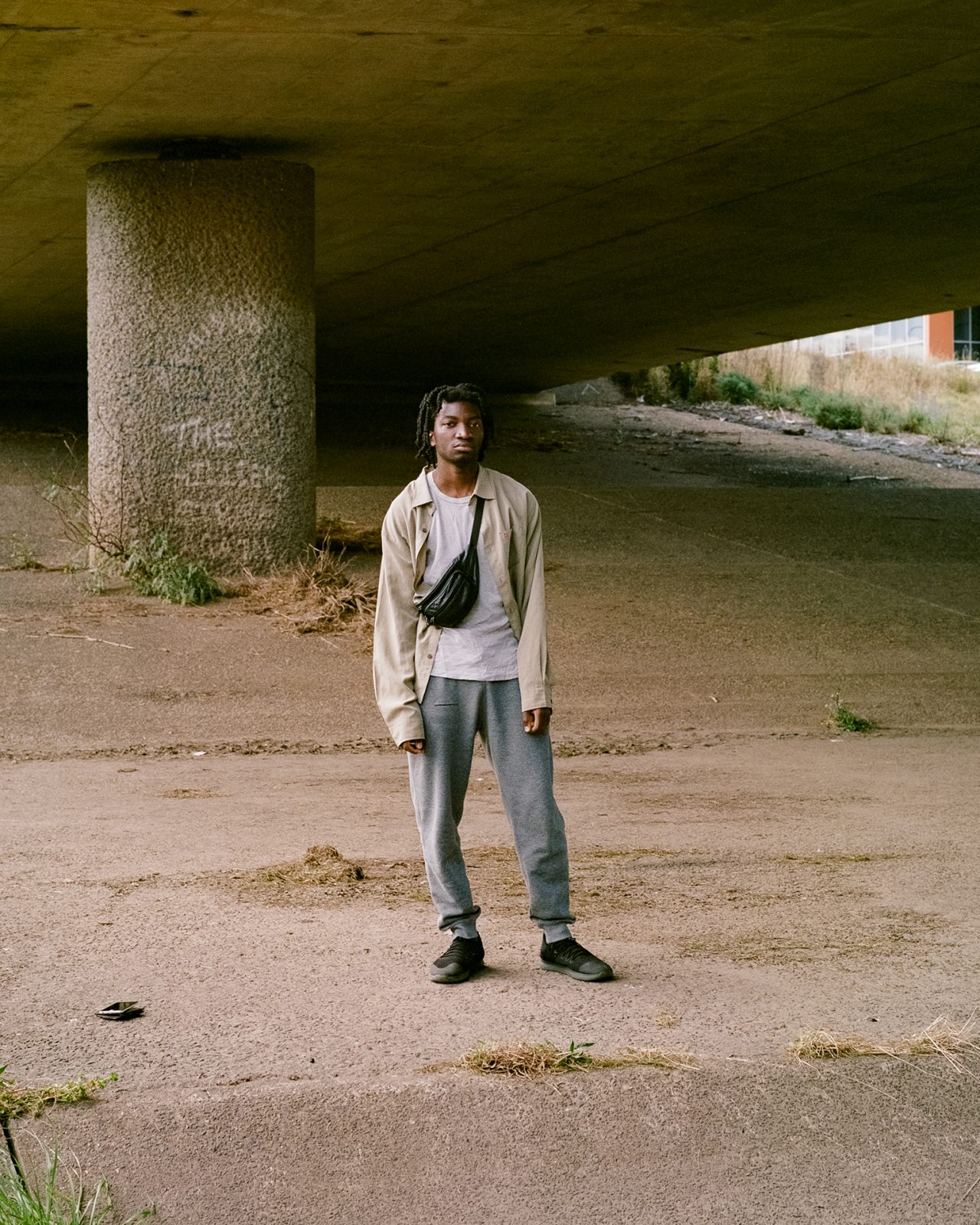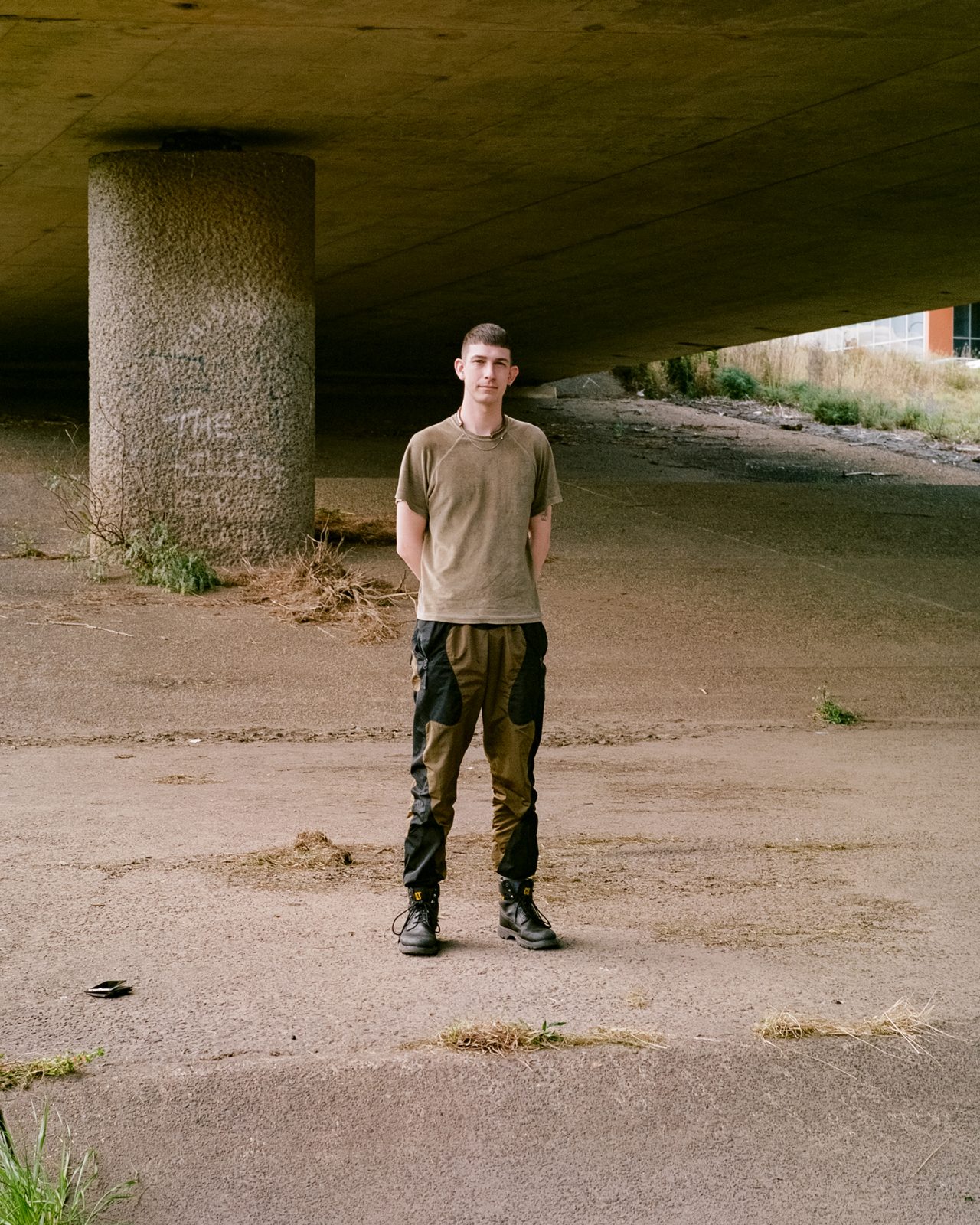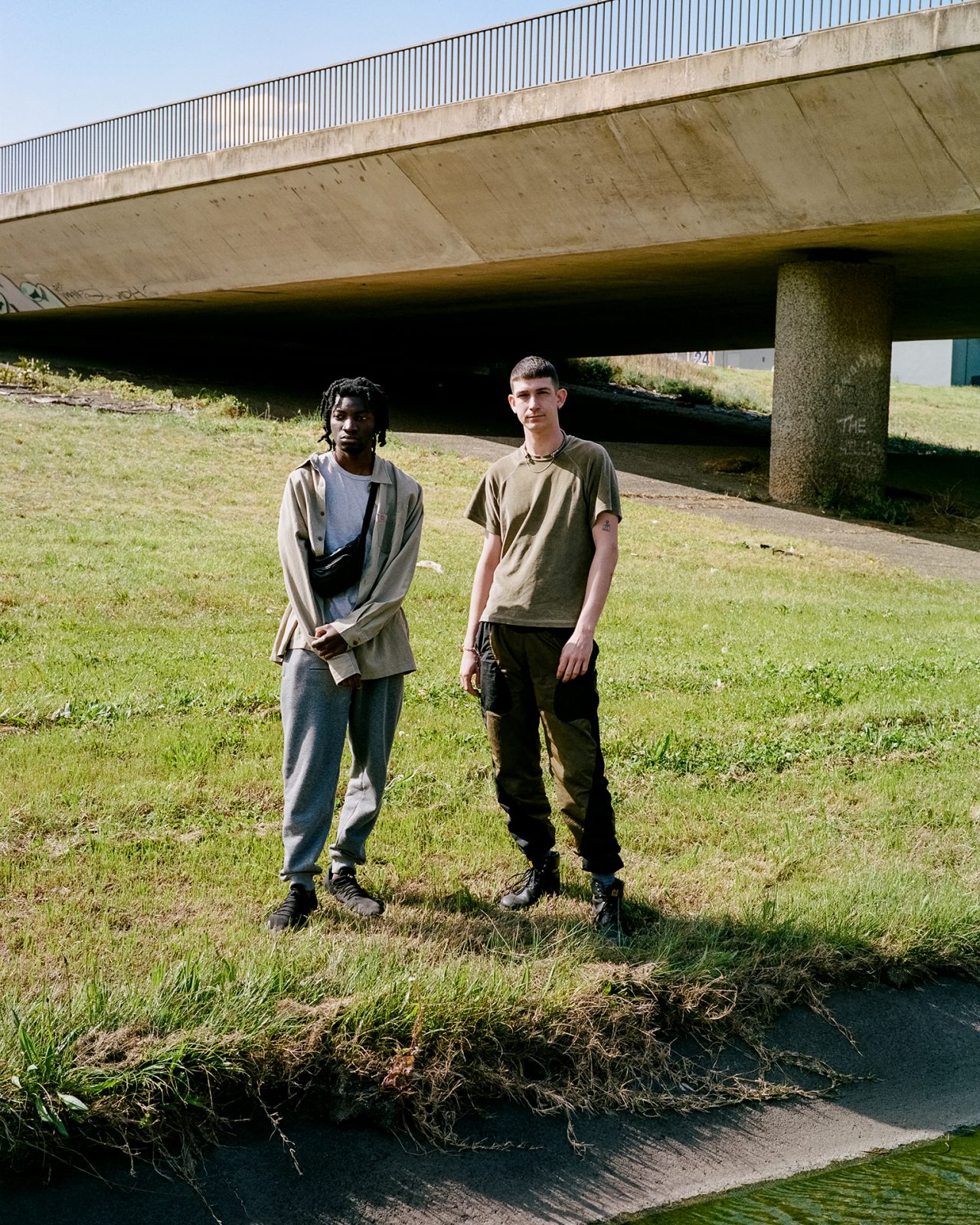The microscopic world is full of unseen intimacy — tiny parasites clinging to the surface of stingrays, lemon-coloured slime molds inching across the underside of leaves and the quietest of chemical reactions spreading through the undergrowth. These natural processes might not immediately bring romance to mind, being so tied up in the language of chemistry, bacteria and the microbial. For Sydney producer SCAM, the relationship between humans and our non-human ‘collaborators’ in life offers powerful emotional terrain. Released last week through DECISIONS, his debut EP Vibrio explores these microscopic love affairs with playful energy, seamlessly melding discussions of bioluminescence with the devotional melodies of late-noughties R&B.
With tender, relatable lyrics from vocalist and musician Seayams, Vibrio is grounded in science and also deliberately naive, drawing links as far removed as oxidative enzymes, Gossip Girl, biopolitics and the dating scene. The EP also happens to be compulsively listenable, its infectious production both scattered and precise. Here SCAM and Seayams discuss collaboration, co-dependence and the romance of bacteria.

Seayams.

SCAM. All photography Joe Brennan.
Vibrio comprises four love songs written for bacteria and molecules. Where does your musical biophilia come from?
SCAM: Basically, I got obsessed with a bunch of bacteria, especially geosmin which is responsible for petrichor or “the smell of rain”. Humans are really sensitive to that scent because it helped us find water and sense storms back when that was really important. That weird, abstract relationship between the human and the non-human is what formed the basis of Vibrio. We started thinking about these biological relationships in comparison to human relations — like, maybe they’re flirtatious, maybe they’re devotional … or maybe they’re just really toxic. [Laughs]
How did you first become involved with the EP, Sim?
SEAYAMS: We just met. Well, not quite. You should tell the story, Tobias. [Laughs]
SCAM: I was with my friend Mei and saying how I was really into this person Seayams. Mei checked it out and messaged me like “That’s my friend Sim, I didn’t know he made music!” [Laughs] And then we all had dinner and went to a cave near my house. I was like “Sim, please help me with this dumb project.”
SEAYAMS: That was cute.
SCAM: It was relatively serendipitous.
You mentioned the flirtatiousness of some of these microbial processes. How do you go about expressing musical affection for bacteria?
SCAM: I wanted all of the melodies to be really over-the-top and emo. One of the melodies in Host actually always reminds of Mr. Brightside by The Killers. I think I subconsciously stole it because I was watching heaps of The O.C. and Gossip Girl at the time. The narratives of love in those shows were also super important for the EP — all the couples have that super meant-to-be-together-forever, fatalistic vibe regardless of how much they hurt each other. It will always be Blair and Chuck or Marisa and Ryan in the end. And so I was thinking about those stories in terms of our almost surreal and unintelligible relationship with geosmin and other bacteria, like, maybe we were just meant to be together too?
I mean, microbial co-dependence seems like the least toxic kind of determinism, which is sort of nice? At least in comparison to something like Gossip Girl where young people are gleefully destroying each other’s lives.
SCAM: Yeah, totally.
SEAYAMS: I approached it in kind of a different way. I was less thinking about the scientific side and more interested in the idea of needing one another romantically or feeding off each other like bacteria. I just tried to let my voice go and play around with it a bit, to get across that devotional mood.
I did wonder how you translated abstract scientific concepts into lyrics that manage to be moving and relatable.
SEAYAMS: Yeah, that was a bit of a struggle at first. [Laughs]
SCAM: I’m sorry Sim!
SEAYAMS: It was like, “Here’s the science, now make the science rhyme.” [Laughs] But as soon as I stopped thinking of it like that and just imagined that I was writing it about a person and thinking about our relationship, it came more naturally.
SCAM: Yeah, shout out to all our friends who were the real inspiration. My reading was that Sim was almost narrativising a search for water or love in a very tangible way. It made the scientific side feel very real. Is that accurate, Sim?
SEAYAMS: Yeah. It’s interesting listening to you talk about it because I hadn’t thought of everything you’re saying. I didn’t approach it consciously in that way, it was more that I was experimenting and trying to feel it out emotionally. I thought a lot about the idea of balance and the need for ecological or bacterial balance as well as the balance between romantic partners. When you have a bad relationship with someone it can be like a sickness or infection.
SCAM: Another really key thing was bioluminescence which is usually a group of bacteria that live on an animal who provides them a home. Bioluminescence is a camouflage mechanism to stop sea animals from casting a shadow at night and revealing themselves to predators. It’s like a mutual support system in a really joyous way. I love that it’s a complex symbiotic relationship that also creates this beautiful light show that humans appreciate on a base aesthetic level. But it’s hot that there’s an interspecies love affair going on behind the scenes. [Laughs]
That’s part of what I love about the EP. Not only are these microbial processes both unseen and under-appreciated in the first place, but so much of the language of science is deliberately inaccessible to the general public. Whereas I feel like Vibrio is actually motivated by the desire to be generous with that kind of information.
SCAM: Yeah. A dominant discourse around bacteria is like, “Germs! They’re scary and gonna kill you!” or it operates in a medical or scientific way. Sim and I wanted to offer an emotional understanding of that relationship.


Do you guys think about the environment in which your music is going to be experienced — whether in a crowded club or alone on the train?
SCAM: Sim, I saw you smile when Joe said “on the train”.
SEAYAMS: [Laughs] Yeah. I don’t think about that context too much. I personally listen to everything on the train — that’s where music is for me.
SCAM: Yeah, I think it is definitely public transport music. [Laughs] Public transport is such an important and special musical space for me too. But on the other hand Host was definitely made with clubs in mind. For me there are definitely times when the context is far more considered, like trying to make really functional club music or really emotional train music. This is more the latter.
Who do you each make music for?
SEAYAMS: I just want to impress my friends. [Laughs]
SCAM: Literally yeah. It’s definitely for the family. But also there’s something really therapeutic about making music, or having any sort of process, which is also for yourself. So that too.
SEAYAMS: It was also fun to be writing these lyrics and relating them all to the people around me and working through my own personal experiences.
The political potential of club culture has been written about a lot. I’m interested by what you’ve called the “biopolitical” instincts of a track like Crumb…
SCAM: In the press release the biopolitical thing was about anti-injection blue lights, which are really common in Sydney, and have this amazing duality with bioluminescent blue light. They’re, like, really vibey and horrifying at the same time. It was a reference to the interface between the state and your body, the light and your veins. But we can talk about the wider politics of the EP too, let me think about it…
SEAYAMS: When I was writing the lyrics I was thinking a bit about figures like Elon Musk and about who has the power to affect the future of our world and the environment. I want to make sure that we can still create spaces for these natural relationships that we’re speaking about to keep occuring in the future.
SCAM: And asking who gets to dictate the parameters of that. I’d also been reading the Donna Haraway book Staying with the Trouble which speaks about developing an emotional kinship with our ecology in a society that doesn’t have much space for that kind of care. That book was so important for the EP too.
Vibrio has been described as “rose-tinted” and I think it does feel quite optimistic. Does that reflect how you guys feel about where we’re headed?
SEAYAMS: I think we’re just young and dumb.
SCAM: Young, dumb and broke … that song? [Laughs] I don’t know if I feel too optimistic — it’s a sad and scary world. But the EP is definitely very posi.
SEAYAMS: And it’s very youthful. We’re both just learning about this stuff for the first time and we’re approaching it from this excited, deeply interested angle.
SCAM: A lot of it is really naive, where we’re just feeling our way through and absorbing all we can. Neither Sim nor I can read music properly nor could we even tell you what key the tracks are in. But that naivety is also a big and intentional part of our process, you know? It’s about intuition and using our knowledge of music history instead of theory — being a listener instead of a maker, being a thirsty fan. For me it’s not like my beautiful singular voice, it’s really networked and interconnected with other music and other ideas.
SEAYAMS: Definitely. Even when I think about my own “beautiful singular voice” in terms of my literal vocals, it’s always responding to the music on my mind.
What comes next for both of you?
SEAYAMS: We want to do a mixtape with all our friends.
SCAM: We just want to be on DatPiff. I also want to rescore this 1920s witch documentary called Haxan.
Listen to Vibiro or purchase a digital copy here.
